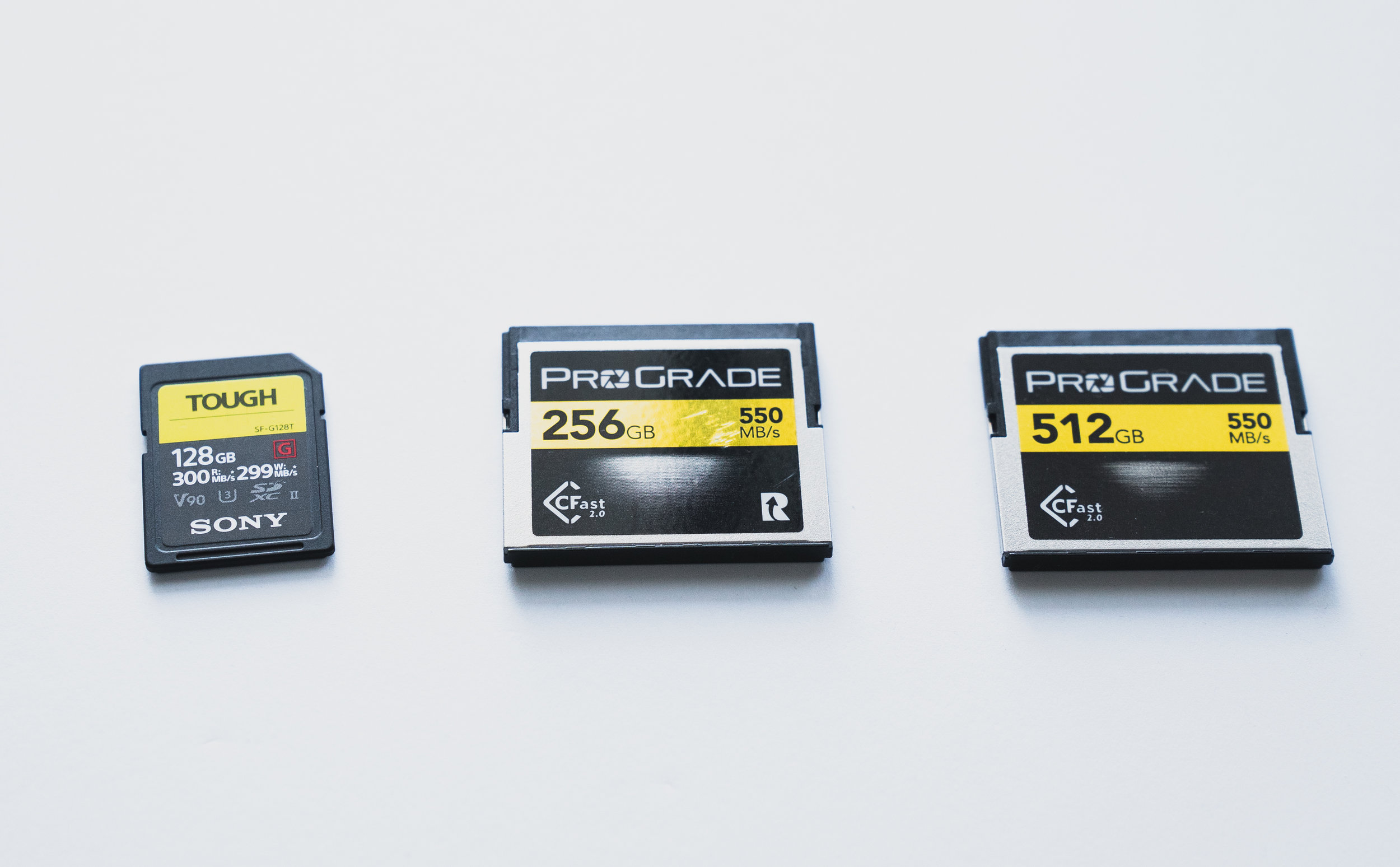My Lightweight Travel Filmmaking Kit
UPDATE: Check out how we built our BMPCC6K rig here: https://www.coenfilm.com/adventurescontent/my-go-to-handheld-cinema-rig-bmpcc6k
Posted by Michael Coen
*Nerd Disclaimer* This article is intended for people who are interested in the technical/operator side of video production and may read as gibberish to most.
With some upcoming travel production trips scheduled with our friends at Umbrla Creative and the recent release of the Black Magic Pocket Cinema Camera 4K, I’ve put a lot of thought into my gear list. I often get asked by people who are interested in content creation, “what camera should I buy?” And while I usually can’t answer that question, I can share how I’ll be packing for my trips in 2019.
Keep in mind that this is written from the standpoint of a producer (not a dedicated DP) who will be directing, shooting and editing videos (not photos) for small/medium sized productions in run-and-gun situations during a travel-heavy itinerary. The goal was to find a balance between a lightweight and minimal gear footprint while still yielding professional results. In summary, I like my stuff to be ready to go at a moment’s notice.
The List
Black Magic Pocket Cinema Camera 4K
For the size and price, the BMPCC 4K offers great dynamic range, color depth, frame rates, professional codecs and many more impressive specs. While it does have its drawbacks, I’ve really enjoyed using this camera and I’m excited to use it on the road.
Pros
High performance cinema camera for price range
Records in 10-bit Apple ProRes HQ or 12-bit color raw
Great in low light
High frame rates
User friendly menu system and large touch screen
Cons
Chews through batteries like you wouldn’t believe
Wider than most mirrorless cameras or DSLRs so it’s difficult to fit onto common stabilizers
Not weather-sealed
Not a photography camera
Requires expensive recording media and large amounts of storage space
Touch screen does not tilt
Panasonic Lumix 12-35mm G X VARIO II, F2.8 Lens
While it would be nice to have some cinema primes on hand, I’m erring on the side of convenience and opting for a one-lens-fits-all approach for now.
Pros
Native to the BMPCC 4K so it utilizes all the BMPCC 4K’s features like the touch screen focus
Has image stabilization which is important because the BMPCC 4K does not
Small and lightweight lens
Good glass for price range
Good zoom range (equivalent to 24-70mm on a full frame camera) and decent macro capabilities
Cons
There are better cinematic lenses.
Ronin-S
The Ronin-S is an incredible stabilizer. From the creative settings to the ergonomics, it’s simply a game-changing filmmaking tool. I highly recommend it for small/medium sized productions, whether traveling or not.
Pros
Great for solo operation
Breaks down and packs small
Battery lasts all day if properly balanced
Cons
Unclear when the follow focus tool will be compatible with BMPCC 4K
Doesn’t easily fit the wide bodied BMPCC 4K
SmallRig Half Cage for BMPCC 4K
A cage provides flexibility and durability to your camera system. More importantly, it’s very functional for mounting the BMPCC 4K to the Ronin-S. Because the camera is so wide, the cage allows me to mount the BMPCC 4K to the Ronin-S by offsetting the camera to the left so it fits on the stabilizer with ease. Otherwise, you have to use that little riser that comes with the Ronin-S to offset the BMPCC 4K, which allowed the camera to twist more than I wanted it to.
Pros
Allows for offset mounting to Ronin-S
Protects camera and offers better grip
Offers custom attachments
Cons
None
Tripod with Manfrotto Video Head
Even though the Ronin-S is fully capable of shooting stable fixed shots, I still like the comfort of a good ol’ fashioned tripod that can be raised to eye level with a nice fluid video head.
Pros
Self-explanatory
Cons
Bulky weight to carry
Have to consider how best to fit in/on your camera bag
Manfrotto Quick Release Mounting Plate
I like being able to switch the camera from the Ronin-S to the tripod with ease so I put a Manfrotto quick-release on the Ronin-S base plate that never gets removed. Then, I use a Manfrotto base plate that lives on the BMPCC 4K cage so it can quickly be mounted to the tripod or the Ronin-S without any re-balancing or screwing on base plates. I’m not brand loyal to Manfrotto but the purpose of this setup is that both the tripod and stabilizer accept the same base plate.
Pros
Ease of use
Quickly switch between stabilizer and tripod
Cons
None
Power: LP-E6N Batteries & Cable to Power Camera via Ronin-S
If you’ve researched the BMPCC 4K, you know that one of the biggest gripes is the battery life. There are some alternative powering options that avoid constantly switching out batteries every half hour, but I found them to be too heavy and/or complicated. Of all the solutions I’ve explored, I’ve found that I don’t mind swapping out batteries all day, mainly because it keeps my rig small and light. The batteries that seem to work best for me are Canon and Wasabi and since the Wasabi batteries are much cheaper, I’ve purchased a bunch of these. Additionally, when the camera is mounted on the Ronin-S, I did find a special cable that powers the BMPCC 4K via the Ronin-S so I don’t have to dismount the camera from the stabilizer each time I have to swap a battery. Just beware that the Ronin-S battery will deplete significantly faster when it’s powering the BMPCC 4K using this cable.
Pros
Minimal and easy
Cons
A lot of batteries required for a full day shoot.
Media - Mix of Sony Tough SD Cards and ProGrade CF Cards
There are three ways to record to media on the BMPCC 4K. 1) An internal SD card. 2) An internal CFast 2.0 card. 3) An external solid state drive. Option #3 is the cheapest and largest, but also the most sensitive and vulnerable to accidents. So, I was willing to spend more on internal cards for the peace of mind and ease of use. The reason I’ve chosen to buy SD cards and CF cards rather than sticking to just one, is that the BMPCC 4K can house both types at once so I might as well maximize the memory capacity in my camera. Whatever cards you buy, make sure they are approved by Black Magic, listed here.
Pros
More reliable recording solution than external SSD
Cons
Insanely expensive for what are essentially tiny pieces of plastic and metal (for example, that 512GB CF card costs $700)
Rode VideoMic Pro
This is the mic I’ve had for a few years now. There is nothing special about it per se, I just already owned it and have used it with a dead-cat for a few documentary style shoots with good results.
Matador Hip Pack
A fanny pack is one of the most underrated items you can have on a shoot. I use mine for accessories like lens cleaner, lens cloth, extra memory cards, lens cap, card reader, batteries, etc.
Pros
Everything you need is on your hip.
Cons
None! Fanny packs are cool.
Matador NanoDry Towel
This towel has two (maybe three) uses. 1) It serves as an extra large lens cloth. 2) When shooting on bright days with the BMPCC 4K, it’s hard to see the touch screen so I drape the towel over my head and the camera body so I can accurately expose/compose my shots. 3) It is a towel after all and in a pinch, I use it for its intended use… to dry off.
Bonus: Mavic 2 Pro
If you know that your video will need aerials, the Mavic 2 Pro is an impressive travel-friendly drone.
Pros
10-bit color
20mp sensor
Fits in a camera bag
Cons
These things can be money pits. I’m now on my third drone in 3 years.
That’s it! All of this should fit into a camera backpack as a carry-on for most airlines (with the exception of the tripod that you might have to strap onto the outside of your bag). Of course no two projects are the same, which is what I love about producing videos. There may be other items I would bring depending on the specifics of the project, but this is my foundation. What do you think? Have you had experience filming and/or traveling with any of this gear? I’d love to hear your thoughts!
Written by Michael Coen
Edited by Tabitha Yeasley













